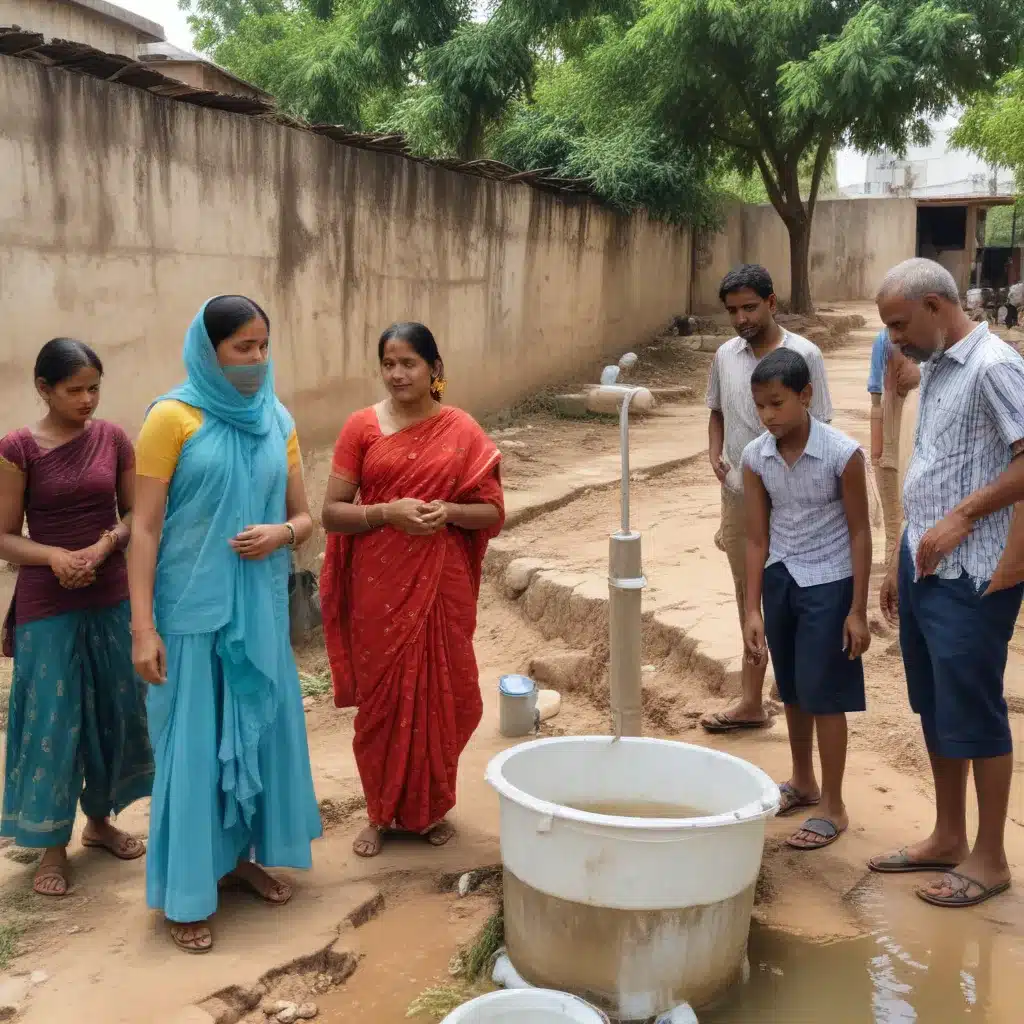
The Challenge of Urban Water Access and Quality
In the rapidly growing city of Hyderabad, India, access to safe and reliable water services remains a persistent challenge. As the population swells, so too do the demands on the city’s water infrastructure, often outpacing the municipality’s ability to keep up. Too many households, particularly in low-income neighborhoods, struggle with intermittent supply, contaminated sources, and the physical and financial burden of securing clean water.
This crisis of urban water access and quality has wide-ranging implications. Without reliable, safe water, communities face heightened risks of waterborne illness, malnutrition, and other public health concerns. Women and children often bear the brunt of water scarcity, spending hours each day fetching water from distant sources. The lack of adequate water services also hampers economic productivity, education, and overall human development.
To address this multifaceted challenge, a collaborative, data-driven approach is essential. By leveraging the knowledge and engagement of local communities, water managers in Hyderabad can build a more comprehensive understanding of water access and quality issues. This, in turn, can inform targeted investments, policy reforms, and community-led solutions to ensure sustainable, equitable water services for all.
Empowering Communities as Citizen Scientists
At the heart of this innovative approach is the concept of “community-based water monitoring.” Rather than relying solely on top-down, centralized data collection, this model harnesses the participation of local residents as citizen scientists. By training community members to monitor water quality, track service interruptions, and report infrastructure issues, water managers can gather a wealth of hyperlocal, real-time information to guide their decision-making.
The benefits of this community-centric approach are manifold. First and foremost, it gives a voice to the people most directly impacted by water challenges, ensuring their perspectives and experiences shape the solutions. Community members often have deep, contextual knowledge of their local water systems and the unique barriers they face – knowledge that can be invaluable for designing effective interventions.
Moreover, this participatory model promotes a sense of ownership and agency among community members. By actively contributing to the monitoring and management of their water resources, residents become empowered stakeholders in the process, rather than passive recipients of services. This, in turn, can foster greater trust, collaboration, and accountability between communities and local authorities.
Building a Sustainable Water Monitoring Network
To establish a robust, community-based water monitoring system in Hyderabad, a multi-pronged strategy is required. This begins with the development of user-friendly digital tools and mobile applications that allow residents to easily log and submit water-related data. Such platforms should be designed with input from the communities themselves, ensuring the interfaces and functionalities meet their needs and capabilities.
Alongside the technological infrastructure, a comprehensive training and capacity-building program is essential. Water managers must work closely with community-based organizations, NGOs, and local leaders to identify and equip willing volunteers as citizen scientists. These training sessions should cover water quality testing, data collection protocols, and effective reporting mechanisms, empowering participants to become active contributors to the monitoring network.
To maintain the long-term sustainability of this community-driven approach, incentives and recognition schemes can play a vital role. Offering small stipends, certificates of achievement, or community-based rewards can help sustain volunteer engagement and ensure the continuous flow of water data. Regular feedback loops, where community input directly shapes water management decisions, further reinforce the value of citizen participation.
Translating Data into Action
The true power of this community-based water monitoring system lies in its ability to inform data-driven decision-making. By aggregating the wealth of hyperlocal information collected by citizen scientists, water managers in Hyderabad can gain a far more nuanced and comprehensive understanding of the city’s water challenges.
Armed with this granular data, authorities can identify priority areas for infrastructure upgrades, targeted service expansions, and water quality interventions. Community-level insights can also inform the development of customized, context-specific solutions, rather than a one-size-fits-all approach. For example, in neighborhoods plagued by intermittent supply, the data may reveal the need for decentralized storage solutions or pressure-boosting technologies.
Importantly, the integration of community-generated data must be coupled with robust public reporting and feedback mechanisms. By transparently sharing the findings and their corresponding actions, water managers can build trust, demonstrate accountability, and encourage continued citizen engagement. This two-way flow of information is crucial for sustaining the momentum of the community-based monitoring initiative.
Scaling Impact Through Collaboration and Advocacy
The successful implementation of sustainable water monitoring in Hyderabad can serve as a model for other cities facing similar challenges. By sharing best practices, toolkits, and lessons learned, water managers and community organizations can collaborate to replicate and scale this approach across India and beyond.
Moreover, the data and insights generated through community-based monitoring can serve as powerful advocacy tools. Armed with evidence-based, hyperlocal information, citizens and civil society groups can engage with policymakers, utilities, and development agencies to push for more equitable, responsive, and sustainable water governance.
At the Joint Action for Water blog, we have long championed the transformative potential of community participation in water and sanitation services. The Hyderabad case study exemplifies how this approach can catalyze tangible improvements in urban water access and quality, ultimately contributing to the United Nations’ Sustainable Development Goal 6 – ensuring availability and sustainable management of water and sanitation for all.
By empowering residents as active partners in the water monitoring and management process, Hyderabad is paving the way for a more inclusive, resilient, and data-driven water future. This is a model worth replicating and scaling, as cities around the world strive to deliver on the human right to water.

